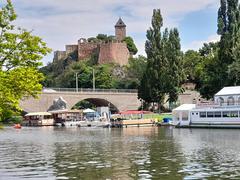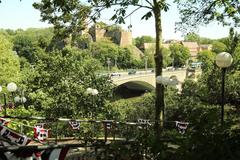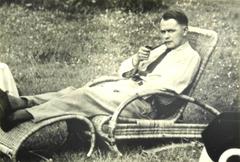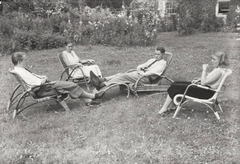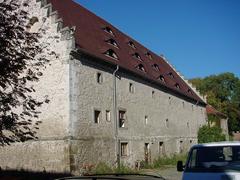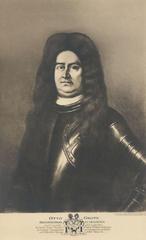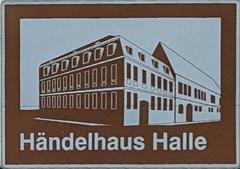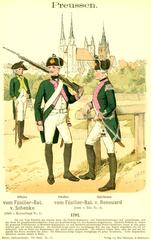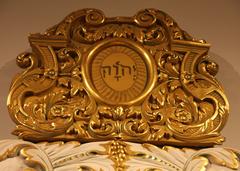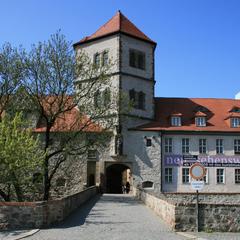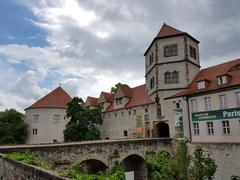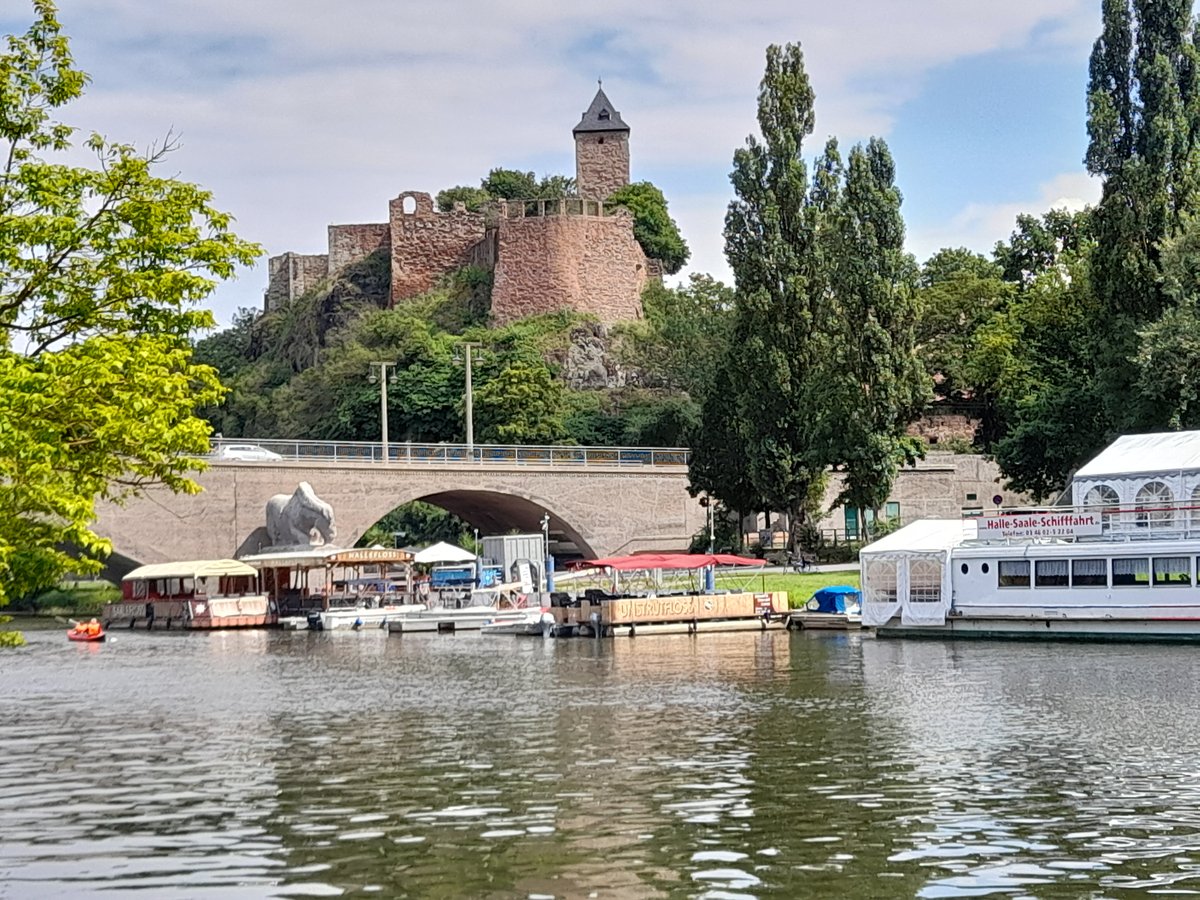
Giebichenstein Castle: Visiting Hours, Tickets, and Historical Highlights in Halle, Germany
Date: 14/06/2025
Introduction
Giebichenstein Castle (Burg Giebichenstein) is a striking fortress perched above the Saale River in Halle (Saale), Saxony-Anhalt, Germany. With roots reaching back to the 10th century, the castle is renowned not only for its atmospheric medieval ruins and Romanesque architecture but also for its modern role as a hub of art and design education. Today, Giebichenstein Castle invites history enthusiasts, art lovers, and families to discover a unique blend of heritage, creativity, and community in Halle. For detailed planning, consult the official Halle tourism website and the Burg Giebichenstein Kunsthochschule Halle. (Wikipedia: Burg Giebichenstein, Stadtmuseum Halle, verliebtinhalle.de)
Table of Contents
- Introduction
- Historical Overview
- Architectural Features and Layout
- Visitor Information
- Cultural Significance and Artistic Legacy
- Legends and Folklore
- Practical Travel Tips
- FAQs
- Nearby Attractions
- Conclusion and Invitation
- References
Historical Overview
Early Origins and Medieval Development
Giebichenstein Castle’s earliest fortifications date to the 10th century, originally situated on a nearby hill known as the “Alte Burg” or Amtsgarten. Archaeological evidence suggests settlement in the area from the late Bronze Age and early Iron Age, with early structures likely consisting of palisaded earthworks. The first documented mention of “castrum Givekenstein” and its castle chapel dates back to 1116. (Wikipedia: Burg Giebichenstein)
In the 12th century, under Archbishop Wichmann of Magdeburg, the castle was transformed into a formidable Romanesque stronghold, featuring a massive gate tower, ring walls, towers, and a great hall. These elements established Giebichenstein as a major regional seat of power.
Political and Ecclesiastical Center
For centuries, Giebichenstein Castle served as a residence for the archbishops of Magdeburg and played a pivotal role in Saxony-Anhalt’s politics and church affairs. It was used as a state prison for nobles and hosted significant imperial visits, such as Emperor Heinrich IV in 1064 and Frederick I Barbarossa in 1157.
From Decline to Cultural Renaissance
The castle remained the archbishops’ primary residence until the early 16th century, when they moved to Moritzburg Palace. Giebichenstein experienced a period of decline before being repurposed in the 20th century. Acquired by the city of Halle in 1921, it became home to an arts and crafts school, which later evolved into the renowned Burg Giebichenstein University of Art and Design. Extensive archaeological work in the 1960s further illuminated the castle’s history, and today the site is an open-air museum. (Stadtmuseum Halle)
Architectural Features and Layout
Romanesque Foundations and Defensive Structures
Giebichenstein Castle exemplifies Romanesque architecture, with robust stone walls, narrow windows, and round arches. Key features include:
- Gate Tower: The massive entrance, a hallmark of Romanesque fortification.
- Ring Wall: Defensive walls over 4.5 meters high, preserving the medieval footprint.
- Curtain Walls and Keep: The Bergfried, or keep, served as a lookout and final refuge.
- Chapel and Great Hall: Spaces for religious services and gatherings (Map of Thrones, Architecture Lab).
Upper and Lower Castle
- Oberburg (Upper Castle): The core medieval fortress, now hosting the Stadtmuseum Halle with exhibitions on local history. The 40-meter-high tower offers breathtaking views over Halle and the Saale Valley (Stadtmuseum Halle).
- Unterburg (Lower Castle): Houses the Burg Giebichenstein University of Art and Design, with workshops, studios, and galleries. The Lower Castle is more accessible and often hosts exhibitions and public events.
Castle Park and Sculptures
The 19th-century landscaped park, designed by renowned architects Peter Joseph Lenné and Friedrich Wilhelm von Erdmannsdorff, surrounds the castle. Distinctive horse and cow sculptures near Giebichenstein Bridge symbolize the castle’s links to both rural and urban life (verliebtinhalle.de).
Visitor Information
Address and Access
- Address: Seebener Straße 1, 06114 Halle (Saale), Germany
- Public Transport: Easily reached by tram (lines 3 or 8 to “Burg Giebichenstein” stop), followed by a short walk uphill
- Parking: Limited on-site; public transport is recommended
Visiting Hours
- Oberburg (Upper Castle):
- April to October: Wednesday to Sunday, 10:00–17:00
- November to March: Wednesday to Sunday, 10:00–16:00
- Closed Mondays and Tuesdays (Stadtmuseum Halle)
- Castle Grounds: Free entry; some events/exhibitions may have separate hours (verliebtinhalle.de)
Tickets and Admission
- Adults: €3–€6 (depending on exhibition)
- Reduced (students, seniors): €2–€4
- Children under 12: Free
- Family and group discounts available
- Tickets can be purchased on-site or online (burg-halle.de)
Accessibility and Facilities
- Mobility: The Upper Castle features uneven terrain and stairs, challenging for wheelchairs and strollers. The Lower Castle and museum areas are more accessible.
- Restrooms: Available on-site; limited during off-peak hours.
- Café/Gift Shop: Refreshments and souvenirs are available during events; local dining options are nearby in the Giebichenstein district.
Cultural Significance and Artistic Legacy
Burg Giebichenstein University of Art and Design
The castle’s Lower and Upper complexes are home to the Burg Giebichenstein University of Art and Design, one of Europe’s leading art institutions. The university animates the castle with creative energy through:
- Studios and Workshops: Housed within historic structures, fostering innovation in jewelry, industrial design, painting, and sculpture.
- Annual Summer Festival: Every July, the university opens its doors to showcase student works and installations, drawing thousands of visitors.
- Public Engagement: Regular exhibitions, workshops, and open studios promote a vibrant connection between artists and the community.
Artistic Events and Festivals
The castle’s cultural calendar is filled with guided tours, theater performances, music festivals (like the annual Trotzburgfest), family activities, and outdoor cinema. The Oberburg’s evocative ruins provide a unique setting for these events (verliebtinhalle.de).
Regional Influence
Giebichenstein Castle is a key site on the Romanesque Road, linking it to other major medieval landmarks in Saxony-Anhalt. Its collaboration with institutions such as Moritzburg Art Museum strengthens Halle’s reputation as a center for art and culture (kunstmuseum-moritzburg.de).
Legends and Folklore
The castle’s storied past is enriched by legends such as “Ludwig the Springer,” a nobleman who famously escaped the castle’s dungeon by leaping into the Saale River—a tale memorialized in local lore (Stadtmuseum Halle).
Practical Travel Tips
- Best Time to Visit: April–October for full access and pleasant weather.
- Footwear: Wear sturdy shoes for uneven paths and tower climbs.
- Language: Most tours are in German; English tours available on request.
- Family-Friendly: Supervise children due to steep drops and ruins.
- Photography: Allowed for personal use; check exhibition rules.
- Pets: Dogs on leashes are usually permitted; restrictions apply during events.
Frequently Asked Questions (FAQ)
Q: What are the castle’s visiting hours?
A: The Upper Castle is open Wednesday to Sunday, 10:00–17:00 (April–October) and 10:00–16:00 (November–March). Closed Mondays and Tuesdays.
Q: How much is admission?
A: Adult tickets range from €3 to €6; reduced rates for students, seniors, and children.
Q: Are guided tours available?
A: Yes, primarily in German; English tours may be arranged in advance.
Q: Is the castle accessible for wheelchairs?
A: The Lower Castle and museum are more accessible; Upper Castle has uneven terrain and stairs.
Q: What events are held at the castle?
A: The castle hosts festivals, art exhibitions, concerts, theater, and family programs throughout the year.
Q: Where can I find current ticket prices and event schedules?
A: Visit the official Halle tourism website, Burg Giebichenstein Kunsthochschule Halle, and Stadtmuseum Halle.
Nearby Attractions
- Moritzburg Art Museum: Art from the Middle Ages to today (Triplyzer)
- State Museum of Prehistory: Home of the Nebra Sky Disk (Wanderlog)
- Marktkirche Unser Lieben Frauen: Halle’s impressive Gothic church
- Francke Foundations: Historic educational and cultural complex
Conclusion and Invitation
Giebichenstein Castle is a living monument where medieval heritage and contemporary creativity meet. Whether you’re climbing the tower for panoramic views, exploring evocative ruins, or engaging with the vibrant art scene, the castle offers a multifaceted experience for every visitor. Plan your visit today and immerse yourself in Halle’s rich history and dynamic culture. For updates, tickets, and events, download the Audiala app and follow the castle and city on social media.
References and Further Reading
- Giebichenstein Castle in Halle: History, Visiting Hours, Tickets, and Attractions (Wikipedia: Burg Giebichenstein)
- Architectural Features and Layout (Map of Thrones), (Architecture Lab)
- Giebichenstein Castle Visiting Hours, Tickets, and Cultural Highlights (verliebtinhalle.de)
- Visitor Information and Event Calendar (Stadtmuseum Halle)
- Things to Do in Halle (Triplyzer), (Wanderlog)
- Moritzburg Art Museum (kunstmuseum-moritzburg.de)
